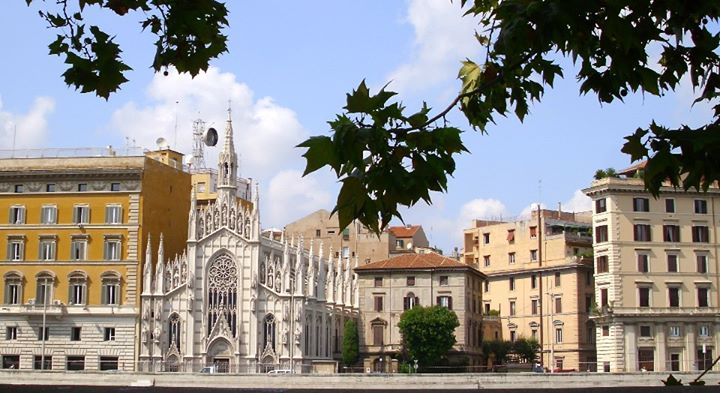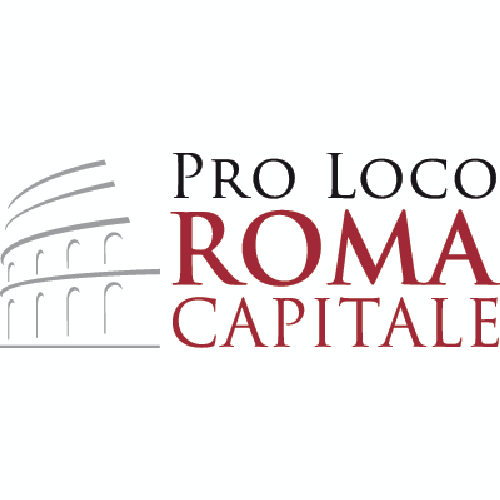


Rome, History & Culture: Birth and development
 Romulus, according to the historian Livio, founded Rome in 753 BC. C. Later, due to the small number of women in the tribes, he invited the neighboring Sabines to a party and organized the kidnapping of their women. Even if Livy's account is a legend, it confirms that Rome was founded in the 8th century BC. C. and that after a short time Romans and Sabines mixed. In the seventh century. to. C. was conquered by the Etruscans. Today there are few traces of Etruscan Rome like the Cloca Massima sewers, which still work. The most famous object, however, remains the bronze sculpture of the She-wolf. The history of Rome then runs rapidly. Between the third and second centuries Rome can already be said to be the master of the whole Mediterranean basin. From this condition derives the phenomenon of the progressive influence, in the culture of the city, of different civilizations charged with lively ferments.
Romulus, according to the historian Livio, founded Rome in 753 BC. C. Later, due to the small number of women in the tribes, he invited the neighboring Sabines to a party and organized the kidnapping of their women. Even if Livy's account is a legend, it confirms that Rome was founded in the 8th century BC. C. and that after a short time Romans and Sabines mixed. In the seventh century. to. C. was conquered by the Etruscans. Today there are few traces of Etruscan Rome like the Cloca Massima sewers, which still work. The most famous object, however, remains the bronze sculpture of the She-wolf. The history of Rome then runs rapidly. Between the third and second centuries Rome can already be said to be the master of the whole Mediterranean basin. From this condition derives the phenomenon of the progressive influence, in the culture of the city, of different civilizations charged with lively ferments.
Rome, History & Culture: Rome becomes aware of art
Until the IV-III century. to. C. Rome is part of an Etruscan-Campanian artistic sphere, but since then, when it is the largest city in Italy, temples in Greek style are built and the Forum is taking on a monumental aspect. The strengthening of the Servian walls initiated grandiose constructions such as Via Appia and the oldest aqueduct in Rome (312 BC). At the end of the third century, with the prevalence of Hellenic refinements, art will be seen as another form of language, a symbol of culture and power. This influence became increasingly strong especially in architecture, from the evolution of the "atrium" house to the new proportions and decoration of the temples, to the general building renovation with the construction of large public buildings such as amphitheaters, basilicas, spas.
Rome, History & Culture: In the Imperial and Early Middle Ages
With the rise of Octavian Augustus, art is tinged with nobility. Many wooden structures are replaced by others in stone and brick, sometimes covered with marble also for the opening of the Carrara quarries.
After the victory of Anzio (31 BC) the triumphal arches begin to appear. Arise in Rome, the Ara Pacis, the Theater of Marcellus, the Forum of Augustus. The use of exposed brick is affirmed and thanks to the adoption of glass in sheets, the use of windows begins and with the rise to power of Vespasian majestic works such as the Colosseum arise.
With Traiano the city is dressed in impressive works of public utility: the Forum, the Markets and the Baths of Trajan all by the great architect Apollodorus of Damascus. Under Hadrian, Hellenistic architecture found vitality in works such as the Pantheon, his Mausoleum (later Castel Sant'Angelo). After that summit, the classical form enters into crisis. When Rome was reduced to a pure center of power with Diocletian's reform, the temple of Minerva Medica was created among the few high artistic testimonies, the first building to experiment with ribbed vaults and the Baths of Diocletian. The Roman baths were also meeting places, there were libraries, barbers, brothels and gyms.
Under Hadrian, Hellenistic architecture found vitality in works such as the Pantheon, his Mausoleum (later Castel Sant'Angelo). After that summit, the classical form enters into crisis. When Rome was reduced to a pure center of power with Diocletian's reform, the temple of Minerva Medica was created among the few high artistic testimonies, the first building to experiment with ribbed vaults and the Baths of Diocletian. The Roman baths were also meeting places, there were libraries, barbers, brothels and gyms.
Finally, with Constantine Christianity comes out of hiding: and here is the innovative Basilica of Maxentius and then the Arch of Constantine, the latest expression of a link with ancient tradition.
In the early Christian era and up to the end of the 13th century, the reference model, appropriately revised, is still the late medieval one, both in the scarce paintings of the catacombs and in the mainly basilica-type architecture (the first Christian churches in Rome were basilicas: oblong, three naves, each of which ending in an apse). Among the Constantinian basilicas there are S. Giovanni in Laterano and S. Pietro on the tomb of the apostle. In the twelfth century the basilican memory mixes with Romanesque influences in the intense reconstruction of important churches. In this phase, the architectural research of colorism begins with white and polychrome marble in contrast with terracotta and colored ceramic bowls.
In Rome there are rare examples of Gothic architecture, such as the church of S. Maria sopra Minerva. Between the '70s and' 90s of the thirteenth century, Arnolfo di Cambio was the great master of sculpture, author of the cibori in the two masterpieces of S. Paolo fuori le mura and S. Cecilia in Trastevere.
Rome, History & Culture: The fifteenth century
 The first decades of the fifteenth century boast the "late Gothic" preciousness of Pisanello and Gentile da Fabriano, but also the more solid frescoes by Masolino, perhaps assisted by Masaccio. Donatello also works in Rome, introducing the new imprint in the tabernacle of the Treasury of St. Peter. In this climate rises Palazzo Venezia inspired directly by the models of Leon Battista Alberti. The best example of a Renaissance church is S. Maria del Popolo. The following works, carried out under the pontificate of Sixtus IV, are now devoid of any Gothic traces. The century is closed by Michelangelo's Pietà in S. Pietro (one of the first sculptures made by the artist in Rome) and the frescoes by Filippino Lippi in S. Maria Sopra Minerva, works that seem to go beyond fifteenth-century concepts.
The first decades of the fifteenth century boast the "late Gothic" preciousness of Pisanello and Gentile da Fabriano, but also the more solid frescoes by Masolino, perhaps assisted by Masaccio. Donatello also works in Rome, introducing the new imprint in the tabernacle of the Treasury of St. Peter. In this climate rises Palazzo Venezia inspired directly by the models of Leon Battista Alberti. The best example of a Renaissance church is S. Maria del Popolo. The following works, carried out under the pontificate of Sixtus IV, are now devoid of any Gothic traces. The century is closed by Michelangelo's Pietà in S. Pietro (one of the first sculptures made by the artist in Rome) and the frescoes by Filippino Lippi in S. Maria Sopra Minerva, works that seem to go beyond fifteenth-century concepts.
Rome, History & Culture: The sixteenth century
In the sixteenth century the greatest artists converge in Rome: From Bramante to Raphael and from Leonardo to Michelangelo. Bramante begins the reconstruction of S. Pietro. Raphael organizes an extraordinary school committed to integrating and completing his immense work. This also allows him to create beautiful portraits of the great protagonists of the time and beautiful sacred paintings. Michelangelo sculpted the Mausoleum of Julius II and worked out grandiose architectures including Piazza del Campidoglio and the Dome of St. Peter.
Rome, History & Culture: Mannerism and the Baroque
Mannerism will occupy the second half of the sixteenth century and its germs already appear in Michelangelo's frescoes, mixing with other concerns evident in artists such as Daniele Da Volterra and Sebastiano del Piombo. Raphael's followers also operate in a mannerist key, such as Giulio Romano and Perin del Vaga. Then the Counter-Reformation dictates strict rules which artists are obliged to abide by. But soon a new awareness of reality will emerge, culminating in the genius of Caravaggio whose paintings, with the dramatic contrast of light and shadow, are numerous in the city in various museums, as well as in San Luigi dei Francesi, S. Maria del Popolo and S. Agostino. The Carraccesco vein is also impressive with results that already lie within the Baroque, which in Rome reaches its highest peaks with Bernini and Borromini. They express the two faces of a time torn by contradictions, one grandiose and spectacular, the other excited and anxious. Bernini, sculptor, architect and painter, gives the city an unmistakable imprint in particular with the colonnade of s. Peter. Borromini is the author of unpublished architectures such as the Cloister and the Church of S. Carlo alle Quattro Fontane and the dome and interior of S. Ivo.
Rome, History & Culture: The eighteenth century
The French rococo dissolves in Rome in a delicate baroque style. The city is dressed in wonderful anti-classical architecture such as the steps of Trinità dei Monti, even if under Clement XII a  classicist evident in the famous Trevi Fountain and in the facade of S. Giovanni in Laterano, on which neoclassicism is grafted after the mid-eighteenth century. Antonio Canova, who moved to Rome in 1781, became the undisputed beacon of neoclassical sculpture by renewing funerary art and placing the model of beauty in the statue of Paolina Borghese. In architecture, however, the figure of Giuseppe Valadier emerges with the arrangement of Piazza del Popolo and the Pincio Park and innovative restorations.
classicist evident in the famous Trevi Fountain and in the facade of S. Giovanni in Laterano, on which neoclassicism is grafted after the mid-eighteenth century. Antonio Canova, who moved to Rome in 1781, became the undisputed beacon of neoclassical sculpture by renewing funerary art and placing the model of beauty in the statue of Paolina Borghese. In architecture, however, the figure of Giuseppe Valadier emerges with the arrangement of Piazza del Popolo and the Pincio Park and innovative restorations.
Rome, History & Culture: Modern Times
When Rome becomes the capital of the kingdom it completely changes its face. Streets and squares are adorned with celebratory monuments, dedicated to characters from recent history. The Liberty trend is established, whose greatest exponent in architecture is Ernasto Basile, to whom we owe the Parliamentary Chamber of Montecitorio. In 1911 for the International Exhibition Cesare Bazzani designed the Palazzo delle Belle Arti, while the avant-garde groups became more active, including the futurist one with Boccioni and Balla. Fascism accentuates the sign of monumentality in architecture: from the University City to the Eur and Foro Italico buildings.
Symbol of the fusion of art and culture can be seen in the recent Renzo Piano Auditorium.

